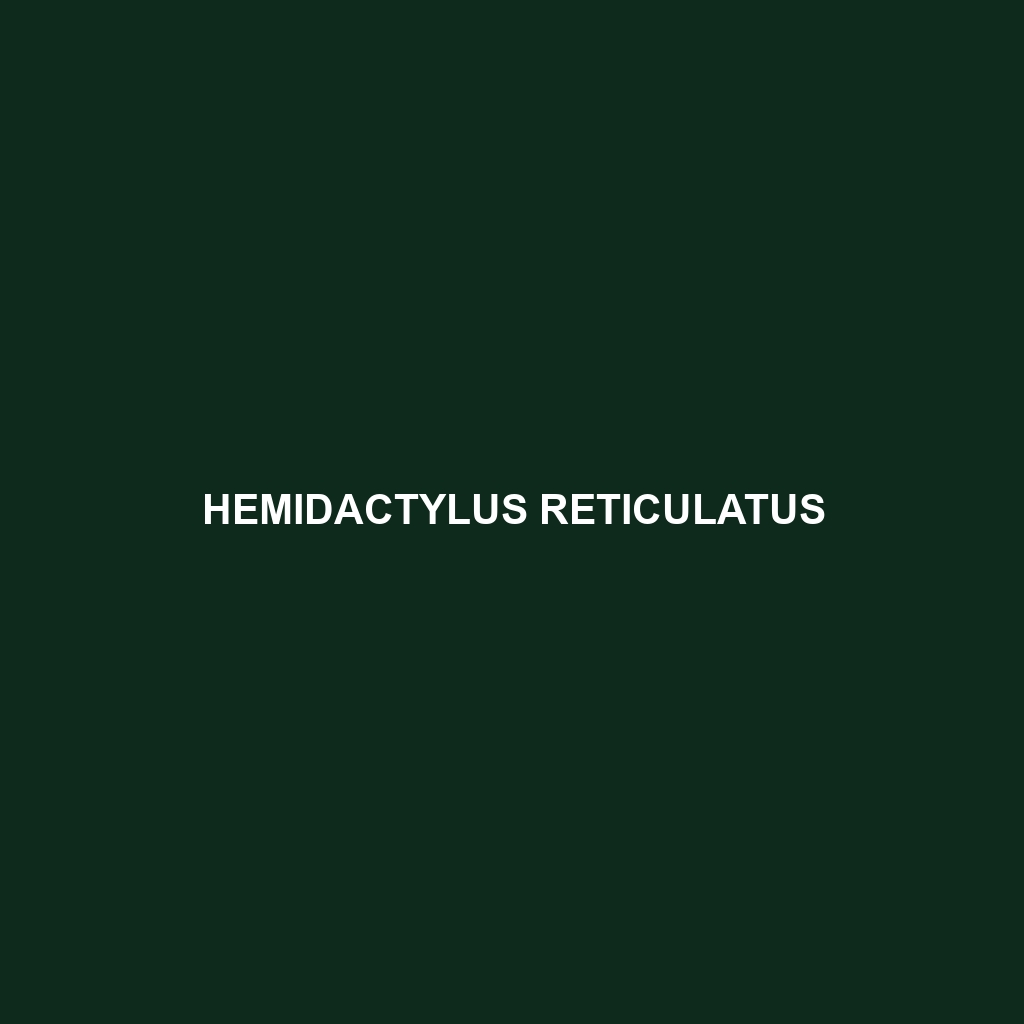Common Name
Hemidactylus reticulatus
Scientific Name
Hemidactylus reticulatus
Habitat
Hemidactylus reticulatus, commonly known as the reticulated house gecko, primarily inhabits various environments across tropical and subtropical regions. This species is widely distributed in Southeast Asia, including countries like Thailand, Malaysia, Indonesia, and the Philippines. It thrives in habitats that include lush rainforests, drier savannas, and even urban areas where human habitation provides ample shelter and food sources.
The climate where Hemidactylus reticulatus is found is typically warm to hot, often with high humidity levels which are ideal for their survival. These geckos prefer environments that offer crevices, walls, and foliage for hiding, as they are adept climbers. Overall, they are versatile in their habitat preferences, having adapted to both natural and developed landscapes.
Physical Characteristics
Hemidactylus reticulatus is recognized by its distinctive appearance. The average length of this gecko ranges from 10 to 15 cm (4 to 6 inches), although some individuals may grow longer. Its body is elongated and somewhat flattened, making it agile on various surfaces.
The coloration of Hemidactylus reticulatus is quite striking, typically displaying a light to dark brown or grey base color. The skin is often adorned with intricate patterns that can range from reticulated spots to horizontal bars, providing effective camouflage against predators and making it challenging to spot in its natural environment. Additionally, its toes are equipped with adhesive discs that contribute to excellent climbing abilities, a feature that sets them apart from other gecko species.
Behavior
Diet
The diet of Hemidactylus reticulatus is primarily insectivorous, making them an essential part of their ecosystem as natural pest controllers. They rely heavily on a diet consisting of a variety of insects such as crickets, beetles, and moths. Occasionally, they may consume small invertebrates. Their foraging behavior is active at night, utilizing their keen vision and quick reflexes to capture prey. Due to their flexible diet, they are classified as opportunistic feeders and can adapt their eating habits based on available food sources.
Reproduction
The reproductive cycle of Hemidactylus reticulatus typically occurs during warm months when food resources are abundant. Mating generally takes place in the spring, with females laying eggs once or twice during the breeding season. Each clutch usually consists of two eggs, which are laid in hidden locations to protect them from predators. After a gestation period of around 30 days, the hatchlings emerge, relatively independent and capable of fending for themselves. Parental care in this species is absent once the eggs are laid, as the young geckos are equipped with skills for survival immediately after hatching.
Conservation Status
Currently, Hemidactylus reticulatus is categorized as Least Concern by the International Union for Conservation of Nature (IUCN). This classification indicates that the species is not facing significant threats; however, like many reptiles, they are susceptible to habitat destruction due to urbanization and deforestation. Despite their stable population levels, ongoing habitat degradation poses a potential risk. Increased conservation efforts and habitat protection measures can ensure their continued survival.
Interesting Facts
Hemidactylus reticulatus exhibits several unique traits, one of the most interesting being its ability to regenerate its tail, which can help it evade predators. Additionally, these geckos are capable of changing their body color slightly, a feature that aids in camouflage-enhancing survival. Another fascinating aspect is their longevity; they can live several years in captivity, surviving upwards of 5 to 10 years with proper care and habitat conditions.
Role in Ecosystem
Hemidactylus reticulatus plays a vital role in its ecosystem. As a predator of insects, it helps in the natural control of pest populations, contributing to the balance of its habitat. By feeding on various insect species, they reduce plant damage and lower potential pest outbreaks, which is particularly important in agricultural contexts. Additionally, their presence supports food webs as they are preyed upon by larger predators, thus maintaining the overall health and stability of the ecosystem.
